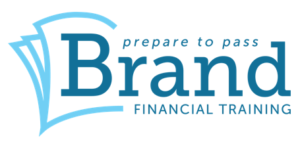The Brand Financial Training team look at National Insurance Contributions for employers and employees – useful reading for those studying for any of the CII CF1, R03, R04, R06, AF1 or AF5 exams, examinable year ending 2020.
The first thing to say is that NICs are calculated on gross earnings – before income tax or any pension contribution is deducted.
Primary Threshold
Employees pay Class 1 National Insurance on their earnings, bonuses, overtime, sick pay, etc but not until earnings are £166 per week; this is called the primary threshold (PT).
Lower Earnings Limit
Another term is the lower earnings limit (LEL), which this tax year is £118 per week. No National Insurance Contributions are payable as clearly this figure is below £166, but the figure is important because this is the amount of earnings that allows an employee to qualify for certain State benefits – the main one being the qualifying years for State pension with the build-up of entitlement done through National Insurance credits.
If someone earns more than the LEL, they won’t pay NICs until their earnings reach the PT of £166 per week.
Upper Earnings Limit
The upper earnings limit (UEL) for this year is £962 per week. This figure is important because employees pay NICs at the rate of 12% between £166 (the PT) and £962 (UEL) and above the UEL they pay 2%.
What the Employer Pays
Employers also have to pay NICs on employee earnings, but they also don’t start paying until earnings are £166 per week. The rate an employer pays is 13.8%, with no upper limit. They must also pay class 1A NICs on any benefits in kind that are provided to an employee, such as a company car, at the same rate of 13.8%. Remember though, employees do not have to pay NICs on such benefits.
Younger Employees and Apprentices
It’s also worth noting that employers who have employees under age 21 and apprentices aged 25 and under, the first £962 of earnings are free of NICs (they pay zero rate up to this point). This is only the employer who benefits; the employee still pays the standard rate of Class 1 on their salary.
Older Employees
Class 1 NICs are not paid once someone is over State Pension age, even if that person is still working. The employee just needs to show their employer proof of age (a birth certificate or passport), or if they don’t wish to show the employer their birth certificate or passport, they will need to write to HMRC and explain why. Then HMRC can send them a letter to show their employer; this will confirm the person has reached State Pension age and no longer needs to pay National Insurance.
Tackling a National Insurance question in an exam
So whenever you tackle a NI question in an exam, remember the starting points for employer and employees, and don’t get these muddled up with the lower earnings limit. Remember also, the figures for NICs will always be in the tax table, so it’s just a case of applying them correctly to get maximum marks.
































